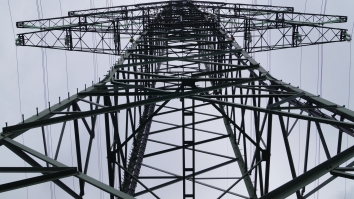The future of the power market in Bangladesh
By David MilliganBangladesh desperately needs to generate more electricity. Despite vast improvements in a host of human development indicators over the past 20 years or so, its ageing power stations are inefficient and are struggling to keep up with demand.
Power blackouts are a daily occurrence for the 50% of Bangladeshis who are on the grid, and this is impeding industrial development.
The present government has made various efforts to tackle the shortages, including relying on expensive rental units to try to meet demand in the short term. The resultant (and frequent) electricity tariff increases over recent years have been extremely unpopular, so the government is focusing on longer term solutions.
One of the main challenges lies in the choice of fuel source. There is a heavy reliance on natural gas at present – around 80% of the power plants in the country are gas-fired.
However, Bangladesh’s proven natural gas reserves are diminishing rapidly, and the state-owned oil & gas company, Petrobangla, is struggling to extract enough natural gas to meet the country’s needs.
To address this shortfall, Petrobangla is in the process of inviting bids to build a floating liquefied natural gas (LNG) import terminal at Moheshkhali Island which is expected to have a capacity of 5 million metric tons per year.
Construction of the terminal should be complete with a couple of years.
Aside from gas, the government is pinning its hopes on the country’s coal reserves as the fuel source of the future. Large coal-fired plants with capacities of 1320MW each are planned for Khulna and Chittagong.
However, coal mining has so far been relatively small scale in Bangladesh, and the proposed open-pit mines in the north of the country have been disrupted by protests. Importing coal may be part of the solution but it is likely to be expensive.
It may also prove difficult to obtain foreign financing for coal-fired power plants, particularly from the more environmentally-conscious international development banks and export credit agencies.
Nuclear is another option, and the government is in the process of carrying out a two-year technical and economic study for the proposed plants at Rooppur. Using Russian money and expertise, the plan is for two 1000MW nuclear plants.
It remains to be seen whether the political necessity to increase generation capacity in Bangladesh will be outweighed by environmental and safety concerns post-Fukushima.
Renewables currently play a small role in Bangladesh’s energy mix, although domestic roof-top solar power units have brought electricity to over a million homes which are not on the grid.
The government has recently announced tax breaks for foreign investors in renewables, so we could see some development in this area – in particular solar energy, and possibly wind.
The challenge for the government is to press on with its plans to increase generation capacity whilst ensuring that its fuel mix is sustainable in the longer term.
























 Advertise
Advertise







